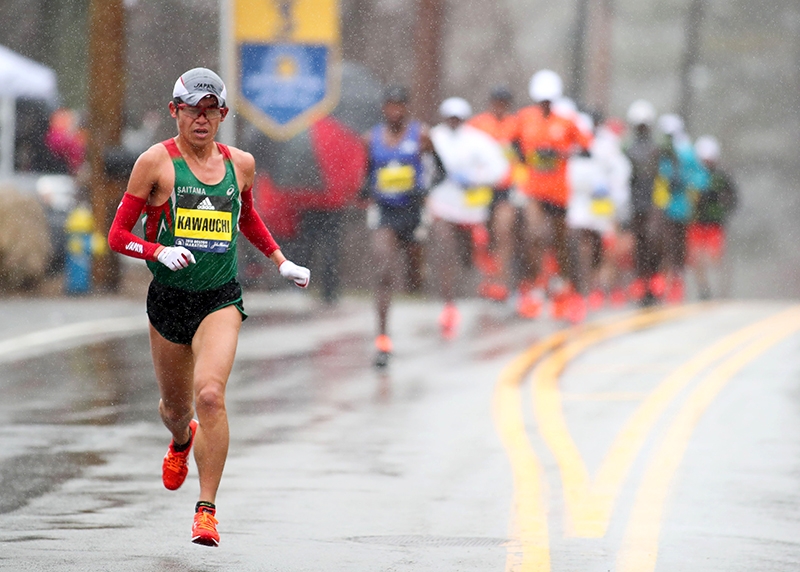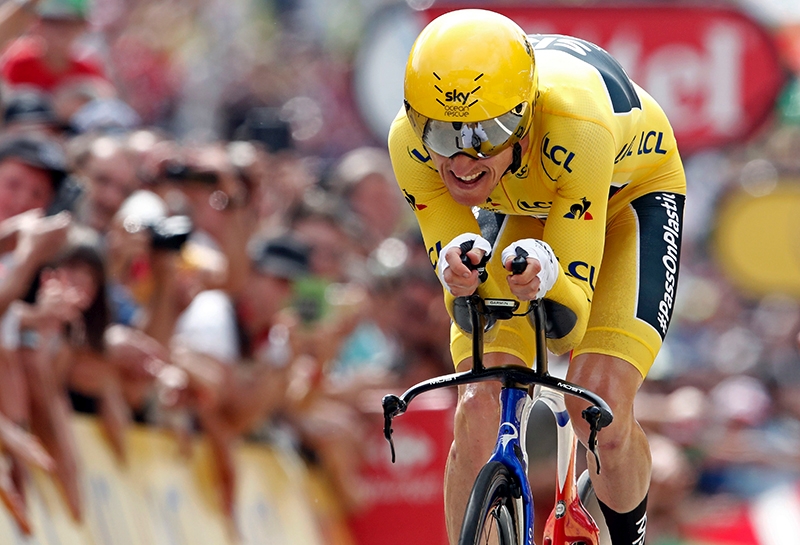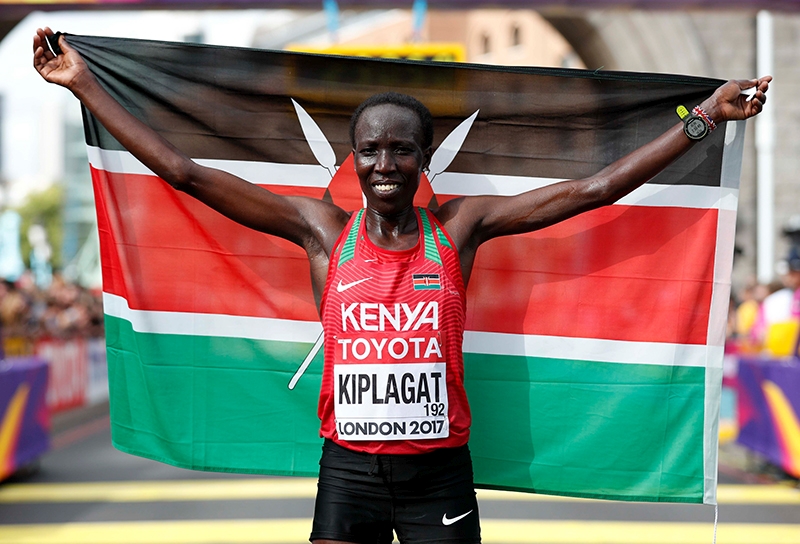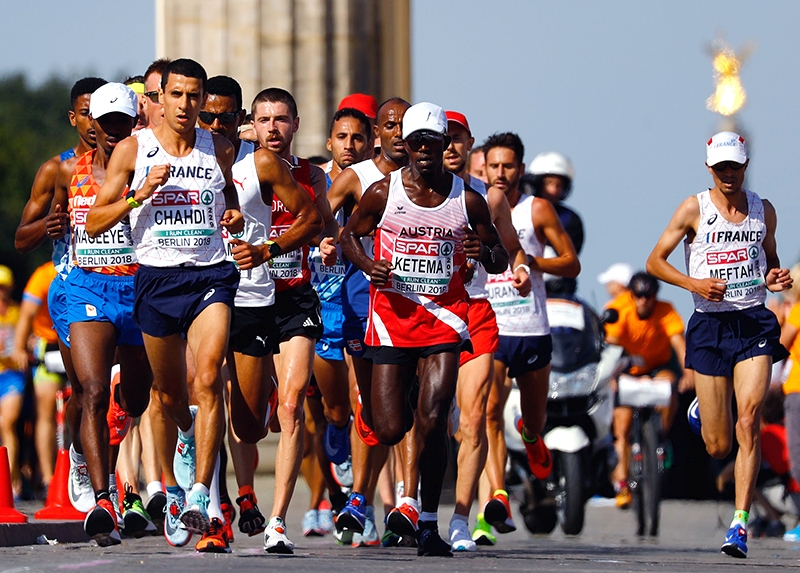You are viewing 1 of your 1 free articles. For unlimited access take a risk-free trial
Effort and recovery: a better approach to race pacing

For most athletes, the term ‘recovery’ means the process of recovering after a bout of exercise in order to be ready go again. However, during a training session or race of variable intensity, there’s a requirement for some degree of recovery after hard efforts while still on the move – for example to surge past an opponent in a 10k running race, or following a burst during a climb on the bike, in order to break away from the pack. This kind of recovery involves recovering from a temporary oxygen debt and clearing lactate from fatigued muscles to regain your previous ‘steady-state’ condition while still training/racing.
But there’s another aspect of performance else that temporarily suffers following a high-intensity effort – muscle economy. Economy refers to how efficient the muscles are (in terms of oxygen usage) at producing force during sub-maximal exercise (ie not flat out). The better the economy of your muscles during exercise, the less oxygen you need to use to propel yourself along at a given speed. In longer races, regaining economy is important because research shows that high levels of economy are crucial for success in endurance sport. Surprisingly, very little research into the effects of intense exercise on muscle economy has been carried out, but some recent research provides valuable insight into this aspect of recovery.
Muscle economy after intense exercise
In a stud published earlier this year, Dutch and US research investigated what happened to muscle economy in cyclists after high-intensity time trials of different durations [Int J Sports Physiol Perform. 2018 Sep 1;13(8):1028-1033]. Nineteen trained male cyclists participated in the study. All the subject performed two flat-out time trials – one of 2000m and one of 20km. Before and after both of these time trials, all the cyclists performed a submaximal exercise test to determine their muscle economy. This test consisted of riding at 55% of the power output attained at the maximal oxygen uptake (steady/easy). The post time-trial tests continued for a period of 30 minutes after the end of the time trial, during which the cyclists’ levels of economy were determined every three minutes.The first finding was that muscle economy decreased substantially during and after the 2000m and 20km time trials – by 11.8% and 6.2%, respectively. In other words, the cyclists required 11.8% more oxygen to sustain the easy pace after the 2000m time trial, and 6.2% more oxygen following the 20km trial. In the 30 minutes following the 2000m time trial, muscle economy partially recovered; at the end of 30 minutes of easy cycling, it was down by only 6.1% compared to 11.8% immediately after the time trial. However, following the 20km time trial, muscle economy did not recover; in fact it decreased a little further to 7.0% below that of the pre time-trial value.
Implications for endurance athletes
Scientists have long known that muscle economy takes a hit after intense exercise. What was not known was how long this hit lasts. This study reveals that the dip in economy lasts for a considerable period of time, and for longer intense efforts, may not recover at all, even after 30 minutes of easy, steady-state exercise. The implication from this study is that if you put in a long, hard effort during a race, your economy during the rest of the race may take a prolonged dip. That will mean you’ll need more energy just to maintain a steady pace following the effort than if you had not put in that effort. This then becomes a balancing act because your hard effort, although it might gain you a lead, could cost you dear later in the race – a potential problem, particularly in a long event. A shorter, hard effort on the other hand might allow for a greater recovery in muscle economy so could be a more worthwhile early-race strategy.Practical suggestions
- Save any long, hard efforts in a race for the later stages, when any subsequent dip in muscle economy will be less important (because you’ll be near the end of the race).
- To help improve your muscle economy recovery, try scheduling in some reasonably sustained harder efforts into your longer, slower training sessions, and perform these early on in the training session.
- Don’t forget the value of heavy strength training to improve muscle economy. One session per week performing two to three sets of 4-6 reps using the main muscle groups in your sport is a great way for endurance athletes to develop improved economy.
Newsletter Sign Up
Testimonials
Dr. Alexandra Fandetti-Robin, Back & Body Chiropractic
Elspeth Cowell MSCh DpodM SRCh HCPC reg
William Hunter, Nuffield Health
Newsletter Sign Up
Coaches Testimonials
Dr. Alexandra Fandetti-Robin, Back & Body Chiropractic
Elspeth Cowell MSCh DpodM SRCh HCPC reg
William Hunter, Nuffield Health
Keep up with latest sports science research and apply it to maximize performance
Today you have the chance to join a group of athletes, and sports coaches/trainers who all have something special in common...
They use the latest research to improve performance for themselves and their clients - both athletes and sports teams - with help from global specialists in the fields of sports science, sports medicine and sports psychology.
They do this by reading Sports Performance Bulletin, an easy-to-digest but serious-minded journal dedicated to high performance sports. SPB offers a wealth of information and insight into the latest research, in an easily-accessible and understood format, along with a wealth of practical recommendations.
*includes 3 coaching manuals
Get Inspired
All the latest techniques and approaches
Sports Performance Bulletin helps dedicated endurance athletes improve their performance. Sense-checking the latest sports science research, and sourcing evidence and case studies to support findings, Sports Performance Bulletin turns proven insights into easily digestible practical advice. Supporting athletes, coaches and professionals who wish to ensure their guidance and programmes are kept right up to date and based on credible science.













